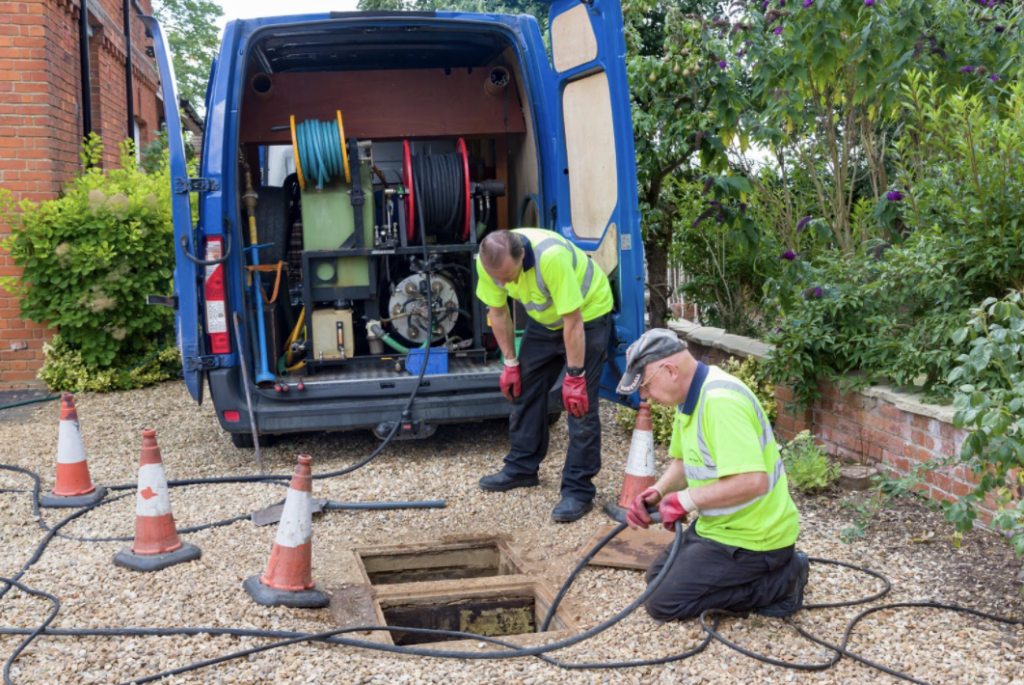If you’ve had a sewer problem but aren’t sure where to dig, you’ve probably heard about video pipe inspection. Plus, pipe issues can be endlessly frustrating for homeowners. However, video pipe inspection is an easy-to-use utility location tool, one that can help us find leaks, cracks, or blockage in their pipes while reducing time, labor, and of course, cost.

Why Video Pipe Inspection Works
When you have a leak or block or other pipe issues, you want to do everything you can to avoid having to dig up the entire length of the pipe to find it. Unfortunately, the process can be messy, expensive, and can take much time to find and fix the problem – not to mention; it’s an ugly-looking event to take place on your front lawn. That’s where video pipe inspections come in.
What Exactly is A Video Pipe Inspection?
One of the many ways plumbers can detect issues without a large-scale excavation is to design these cameras with fiber optics and run them through the pipes to pinpoint damage or blockages. This step is essential with hard to identify spots like cement or under the house foundation.
The camera itself is durable, waterproof, and high resolution to ensure the quality isn’t compromised, even for the most challenging jobs. With an LED light on the end of the inspection rod, we’re able to see along the inside of the pipe, and the attached scope rod can bend and maneuver around curves and corners.
How Does a Video Pipe Inspection Work?
After the camera lowers into the system, a live video feed transfers to a monitor that our trained technicians watch. We can then inspect the condition of both the pipes and conduits, allowing us to locate where your problem is (and possibly identify future issues as well). In addition to the various rods, a video pipe inspection tool has a transmitter, so when the problem gets located, we can mark it above ground. From there, we will be able to better advise you on how to proceed.
A great part of having a video pipe inspection done is that the video footage taken can be collected and stored as a file that you, as a homeowner, can keep. If you’re interested, this will allow you to follow along inside the pipes and offer a vital record should another issue arise.
What Problems Can Video Pipe Inspection Help With
Having a video pipe inspection done can allow you to identify many different issues, including:
- Detect holes, leaks, and other obstructions
- See the positioning of a root intrusion
- Allow you to find breakage, corrosion, or puncture issues
- Discover grease buildup or clogs
- Determine the layout and depth of the pipe system
- Locate non-detectable storm laterals
- Verify that the system abides by regulations
- Find potential future issues
- Double-check after a cleaning or repair service
When Do We Recommend Having a Video Pipe Inspection Done?
Repeat Draining Issues
If you’re dealing with repeated clogs, backups, or draining issues with your sink, tub, or other appliances, then the problem could fall outside the scope of your indoor plumbing. Video pipe inspection allows you to rule out the possibility of outdoor plumbing issues or even fix the problem completely.
Leaks or Blockages
Even if you already have a general idea of where the issue is, sometimes the traditional vacuum excavation methods won’t reach the problem area. It could be under your home’s foundation or in other hard-to-reach places, making it difficult to pinpoint the issue’s exact location.
Lost Items
You see it all the time: a wedding ring slips off while you’re doing dishes, or an earring falls while you’re putting them in over the sink. If you’ve lost something of value down the sink pipe, you don’t have to assume it’s gone forever – video pipe inspection allows us to find small items with accuracy.
Before Buying a Home
Before you buy a home, you should have as much information as possible, including pipe inspection. It’s essential to be cautious when investing in such a significant purchase, especially if you’re buying an older home. However, underground pipes are typically not included in routine real estate inspections, so a video pipe inspection can allow you to avoid future issues with your new home.
Remember, around 40 percent of homeowners have experienced loss from water damage, but 93% of water damage is avoidable. With a crack as small as 1/8th of an inch in a pipe, you can lose 250 gallons of water a day, which is bad for your lines, the water bill, and the environment.
The Benefits of Video Pipe Inspection
Less Expensive
Video pipe inspection saves you time and money. By allowing us to know the exact problem before making repairs, we can price the repair cost more fairly and avoid surprise costs that come with digs with less information available upfront.
Reduced Labor and Faster Resolutions
By using video pipe inspection, we can have significantly more information when we begin our fixes. Having this knowledge allows us to decrease the amount of labor and time needed to repair your issue.
Less Intrusive
When you don’t know where the issue is coming from, you might have to lift entire sections of underground pipe to find minor leaks or clogs. With video pipe inspection, we can rift down to the very spot, significantly lessening the amount of damage done to your lawn.
Got a Leak? Try Video Pipe Inspection Today
Goodbee Plumbing believes in using all the latest technology to solve your plumbing problems. We know that you want fast, reliable, and non-invasive fixes whenever possible and believe that providing that experience is of the utmost importance. That’s why we love video pipe inspections and think you will too.
If you’re having trouble with your pipes or are interested in doing a preventative inspection, let us know today.
